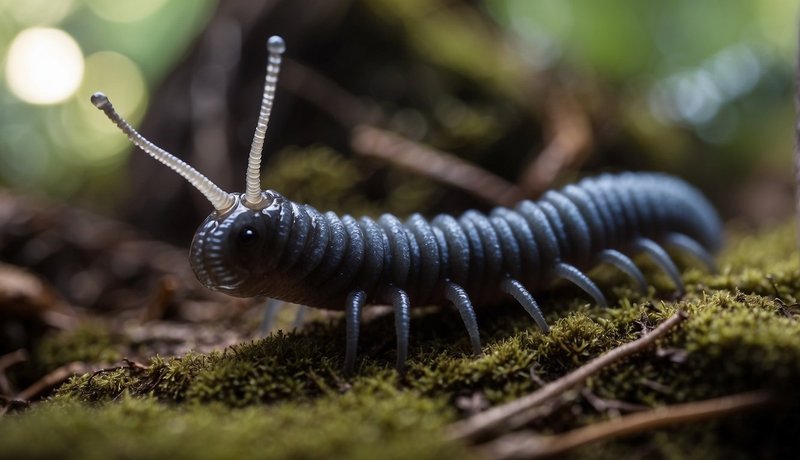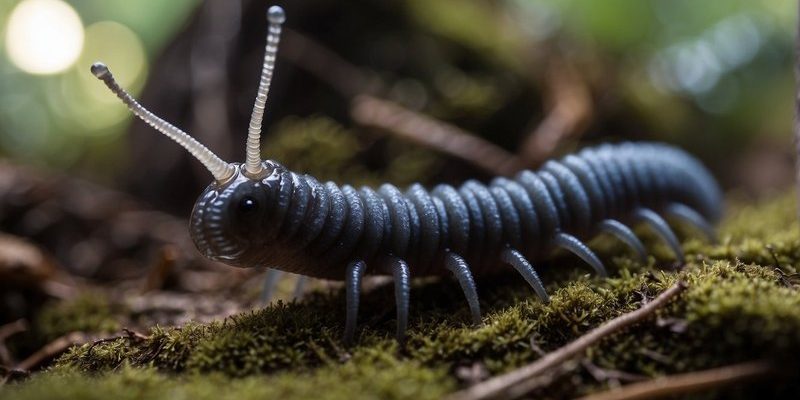
So, how do these soft-bodied wonders go about digesting their meals? Honestly, it’s quite a remarkable process that’s as intriguing as the worms themselves. Velvet worms are equipped with slime-producing glands that help them catch their prey, and once they’re captured, digestion becomes a whole other adventure. Let’s dive into the world of velvet worms and explore how they turn their tasty finds into energy.
What Are Velvet Worms?
Before we get into their digestion process, let’s take a moment to understand what velvet worms really are. These little guys, scientifically known as Onychophora, are neither worms nor mollusks. Instead, they belong to their own unique group of animals that has been around for millions of years. Picture a combination of a caterpillar and a slug, and you get a pretty good idea of their appearance.
Velvet worms can be found in various environments, from rainforests to ecosystems that might not get as much attention. They have soft, flexible bodies covered in a velvety texture—hence their name. With their many legs (up to 43 pairs!), they move with a slow but deliberate grace. But don’t let their sluggish nature fool you; these worms are skilled hunters.
How Do Velvet Worms Capture Their Prey?
Now, you might be wondering how these little creatures manage to catch their food. Velvet worms have a fascinating hunting technique that involves a gooey secretion. They can shoot a sticky slime from their slime glands, which can immobilize or ensnare insects like crickets or beetles. It’s almost like they’re using a web of sticky traps, but instead, they’re firing a glue-like substance from their bodies.
Once their prey is captured and contained, it’s not just about the capture—what comes next is truly remarkable. The worms will then move in, using their specialized jaws to chew and inject digestive enzymes into their meals. This is where the magic of digestion begins.
The Digestion Process: A Step-By-Step Breakdown
Let’s break down the digestion process into simple steps to make it easier to understand. Here’s how it goes:
- 1. Prey Capture: After firing slime to catch an insect, the velvet worm secures it tightly with its sticky secretion.
- 2. Enzymatic Injection: Using specialized jaws, the worm punctures the prey and injects digestive enzymes.
- 3. External Digestion: The injected enzymes begin breaking down the prey’s tissues outside its body, turning it into a liquid meal.
- 4. Consumption: Finally, the worm slurps up the liquefied remains, much like sipping through a straw.
You might be thinking, “How does that even work?” It’s simple! The enzymes break down proteins and carbohydrates in the prey, making them easier to absorb. By doing this, velvet worms efficiently turn their meals into nutrients.
Why This Digestion Method Matters
You might ask, “Why should I care about how velvet worms digest their prey?” Well, understanding their method of digestion gives us insights into ecosystem dynamics and survival strategies. These creatures play a crucial role in controlling insect populations. If velvet worms weren’t around, their prey might become overpopulated, causing a ripple effect in the food chain.
Moreover, studying how they digest food can lead to interesting discoveries in biology. Their unique methods might inspire new techniques in medicine or biotechnology. Just think of the possibilities!
Comparing Velvet Worms to Other Predators
When we think about predators in nature, we often think of big cats, birds of prey, or even insects like praying mantises. But velvet worms offer a different perspective. Unlike traditional hunters that consume their prey whole or tear it apart, velvet worms practice external digestion. This makes them more akin to certain types of fungi, which also break down food outside their bodies.
In contrast, creatures like lions use their teeth and claws to subdue and consume their prey directly. Each method of digestion comes with advantages and challenges. For example, velvet worms don’t need to exert as much energy in catching prey, while bigger predators must chase down their meals.
Common Misconceptions About Velvet Worms
People often have misconceptions about velvet worms. Some might think they’re just cute slugs without any real abilities. Sure, they might not look fierce, but these creatures are remarkable hunters. Their hunting technique might seem unsophisticated, but it’s effective for their ecological niche.
Another misconception is that velvet worms are dangerous. While they do have a venomous bite, they’re harmless to humans. Their slime might seem creepy, but it’s simply a survival tool. Just imagine a superhero using a sticky web to catch villains!
The Future of Velvet Worms
As we learn more about velvet worms, it’s essential to consider their future. Many species are facing habitat loss due to deforestation and climate change. Their unique roles in ecosystems can be threatened if we don’t take action to protect their environments.
Here’s the thing: by valuing and protecting these creatures, we’re also supporting biodiversity. Every small action—like reducing plastic waste or supporting conservation efforts—can make a difference.
In wrapping this up, velvet worms may seem like odd little creatures, but they have incredible stories to share about survival, hunting, and adaptation. Their process of digestion is just one chapter in the fascinating book of nature. Next time you think about how animals feast on their meals, don’t forget about these unique organisms and their sticky, successful methods.

